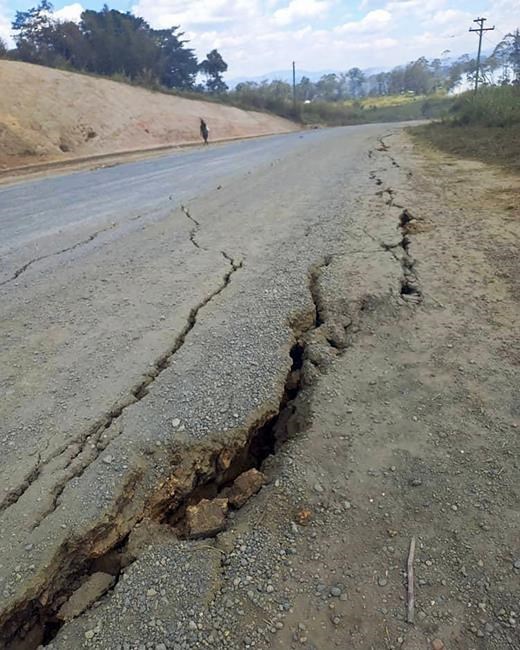WELLINGTON, New Zealand (AP) — At least three people are dead after a powerful earthquake hit a remote part of Papua New Guinea Sunday morning, authorities say. Others were injured and infrastructure damaged in the magnitude 7.6 jolt that was felt across the Pacific country.
The three people died in a landslide in the gold-mining town of Wau, said Morobe Provincial Disaster Director Charley Masange. Other people had been injured from falling structures or debris, and there was damage to some health centers, homes, rural roads and highways, Masange told The Associated Press.
Masange said it could take some time to assess the full extent of the injuries and damage in the region. But he said the sparse and scattered population and lack of large buildings near the epicenter in the nation's largely undeveloped highlands may have helped prevent a bigger disaster, given the earthquake was so strong.
One resident from the town closest to the epicenter described his ordeal to the AP.
Renagi Ravu was meeting with two colleagues at his home in Kainantu when the quake struck.
Ravu tried to stand up from his chair but couldn't maintain his balance and ended up in a kind of group hug with his colleagues, while plates and cups crashed from his shelves to the ground, he said. His children, ages 9 and 2, had their drinks and breakfast spill over.
Ravu, who is a geologist, said he tried to calm everybody as the shaking continued for more than a minute.
Ravu said that about 10,000 people live in and around his town, which is located 66 kilometers (41 miles) from the quake's epicenter.
He said people were feeling rattled.
“It's a common thing that earthquakes are felt here, but it usually doesn't last as long and is not as violent as this one,” Ravu said. “It was quite intense.”
Ravu was sorting through the damage to his home, which he said likely included a broken sewer pipe judging from the smell. He said friends elsewhere in Kainantu had messaged him with descriptions of cracked roads, broken pipes and fallen debris, but hadn't described major building collapses or injuries.
“They are starting to clean up their houses and the streets,” he said. Communication seems to have been affected, he added, with some cell towers likely to have fallen.
A magnitude 7.5 earthquake in 2018 in the nation’s central region killed at least 125 people. That quake hit areas that are remote and undeveloped, and assessments about the scale of the damage and injuries were slow to filter out.
Felix Taranu, a seismologist at the Geophysical Observatory in the capital Port Moresby, said it was too early to know the full impacts of Sunday's earthquake, although its strength meant it “most likely caused considerable damage.”
According to the U.S. Geological Survey, the quake hit at 9:46 a.m. local time at a depth of 90 kilometers (56 miles). NOAA advised there was no tsunami threat for the region.
Papua New Guinea is located on the eastern half of the island of New Guinea, to the east of Indonesia and north of eastern Australia. It sits on the Pacific’s “Ring of Fire,” the arc of seismic faults around the Pacific Ocean where much of the world’s earthquakes and volcanic activity occurs.
Nick Perry, The Associated Press



